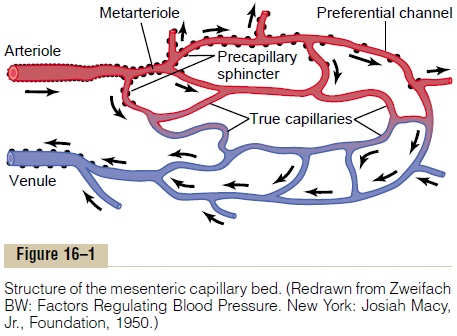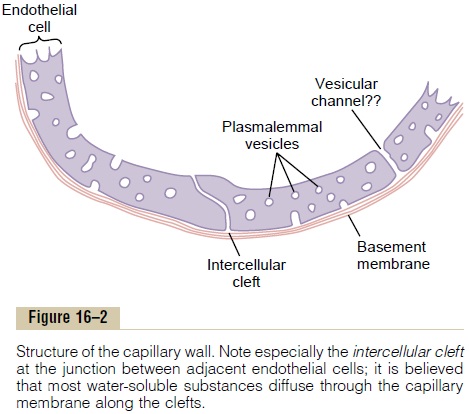Chapter: Medical Physiology: The Microcirculation and the Lymphatic System: Capillary Fluid Exchange, Interstitial Fluid, and Lymph Flow
Flow of Blood in the Capillaries-Vasomotion
Flow of Blood in the Capillaries—Vasomotion
Blood usually does not flow continuously through the capillaries. Instead, it flows intermittently, turning on and off every few seconds or minutes. The cause of this intermittency is the phenomenon calledvasomotion, which means intermittent contraction of the metarte-rioles and precapillary sphincters (and sometimes even the very small arterioles as well).
Regulation of Vasomotion. The most important factorfound thus far to affect the degree of opening and closing of the metarterioles and precapillary sphinc-ters is the concentration of oxygen in the tissues. When the rate of oxygen usage by the tissue is great so that tissue oxygen concentration decreases below normal, the intermittent periods of capillary blood flow occur more often, and the duration of each period of flow lasts longer, thereby allowing the capillary blood to carry increased quantities of oxygen (as well as other nutrients) to the tissues. This effect, along with multi-ple other factors that control local tissue blood flow.

Average Function of the Capillary System
Despite the fact that blood flow through each capillary is intermittent, so many capillaries are present in the tissues that their overall function becomes averaged. That is, there is an average rate of blood flowthrough each tissue capillary bed, an average capillary pressure within the capillaries, and an average rate of transfer ofsubstances between the blood of the capillaries and thesurrounding interstitial fluid. In the remainder, we will be concerned with these averages, although one must remember that the average func-tions are, in reality, the functions of literally billions of individual capillaries, each operating intermittently in response to local conditions in the tissues.

Related Topics